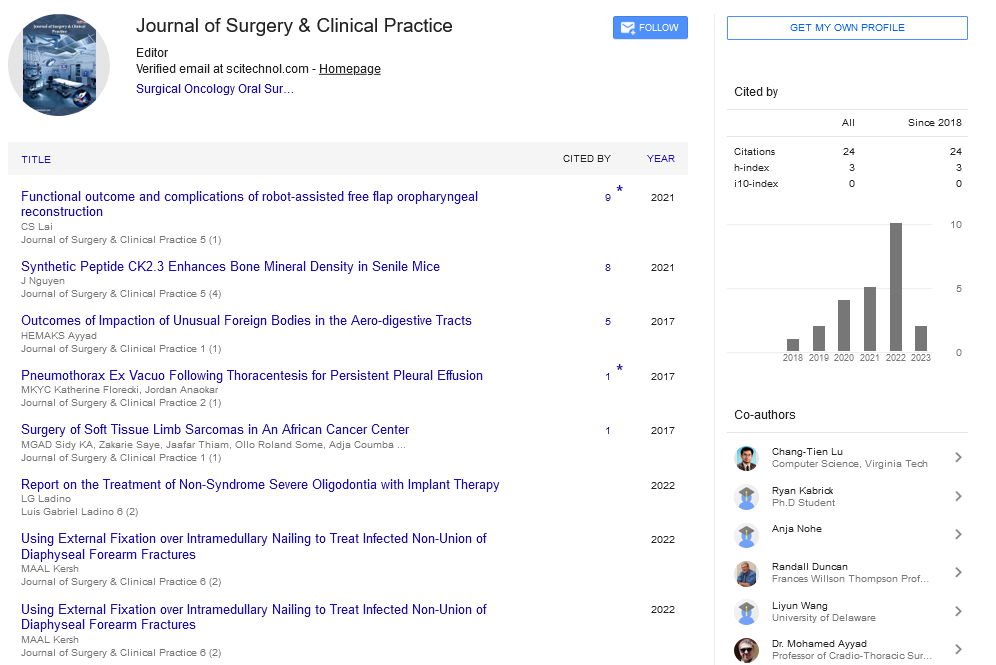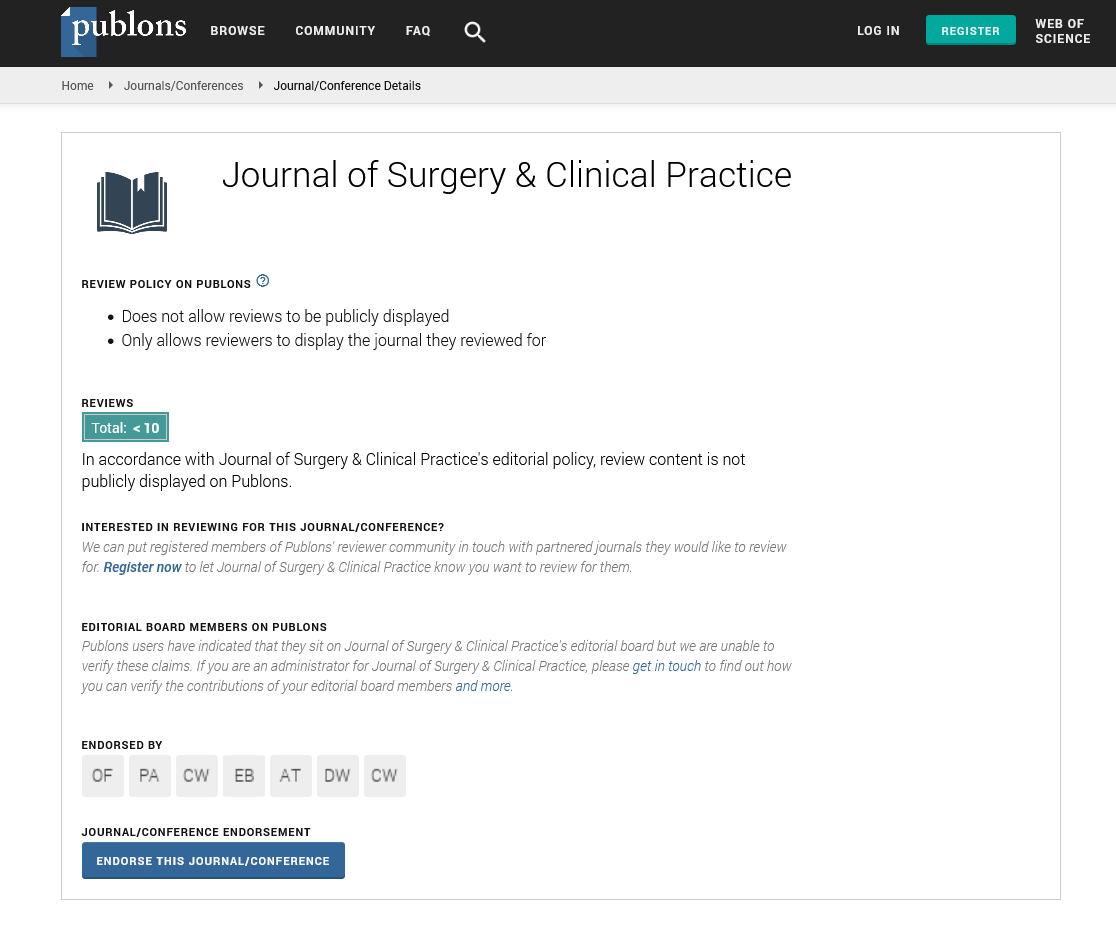Perspective, J Surg Clin Prac Vol: 7 Issue: 4
Evolution and Impact of Minimal Access Surgery Techniques
Michael Ceulemans*
1Department of Medicine, University of Sydney, Sydney, Australia
*Corresponding Author: Michael Ceulemans,
Department of Medicine, University
of Sydney, Sydney, Australia
E-mail: michael@cul.au
Received date: 22 November, 2023, Manuscript No. JSCP-24-128584;
Editor assigned date: 24 November, 2023, PreQC No. JSCP-24-128584(PQ);
Reviewed date: 08 December, 2023, QC No. JSCP-24-128584;
Revised date: 15 December, 2023, Manuscript No JSCP-24-128584(R);
Published date: 22 December, 2023, DOI: 10.35248/ JSCP.23.7.100399.
Citation: Ceulemans M (2023) Evolution and Impact of Minimal Access Surgery Techniques. J Surg Clin Prac 7:4.
Description
Minimal Access Surgery (MAS), also known as minimally invasive surgery, has revolutionized the field of medicine, offering patients less invasive alternatives to traditional open surgeries. The evolution of MAS techniques has been marked by groundbreaking innovations and transformative impacts on patient care. This essay explores the historical development, key milestones, and profound impact of minimal access surgery techniques on modern healthcare. The roots of minimal access surgery can be traced back to the early twentieth century when pioneering surgeons began exploring ways to minimize surgical trauma and improve patient outcomes. However, it was not until the late twentieth century that significant advancements in technology and surgical techniques paved the way for the widespread adoption of MAS.
Laparoscopy, one of the important techniques of minimal access surgery, emerged in the 1970s as a means of visualizing the abdominal cavity through small incisions. Initially used for diagnostic purposes, laparoscopy evolved rapidly with the introduction of specialized instruments and video camera systems, enabling surgeons to perform a wide range of minimally invasive procedures. The 1990s witnessed another milestone with the advent of robotic-assisted surgery, which combined advanced robotics with laparoscopic techniques to enhance surgical precision and dexterity. Robotic systems, such as the da Vinci Surgical System, revolutionized MAS by providing surgeons with enhanced visualization, ergonomic controls, and 3D imaging capabilities.
Several key milestones have shaped the evolution of minimal access surgery techniques and contributed to their widespread adoption in various medical specialties. The widespread adoption of laparoscopic cholecystectomy in the 1990s marked a turning point in surgical practice, demonstrating the feasibility and benefits of minimally invasive approaches for complex procedures. The development of robotic systems, such as the da Vinci Surgical System, expanded the scope of minimally invasive procedures and enabled surgeons to perform intricate surgeries with greater precision and control.
Innovations in imaging modalities, such as high-definition cameras and intraoperative imaging systems, have enhanced visualization and navigation during minimal access surgeries, improving surgical outcomes and patient safety. The impact of minimal access surgery techniques on patient care has been profound, encompassing various aspects of surgical treatment, recovery, and long-term outcomes. Minimal access surgery techniques minimize tissue damage and intraoperative trauma, leading to smaller incisions, less postoperative pain, and faster recovery times compared to open surgeries. Smaller incisions and minimally invasive approaches result in better cosmetic outcomes, reducing scarring and improving patient satisfaction with their surgical experience. Minimal access surgery techniques offer comparable or superior outcomes to traditional open surgeries in terms of safety, efficacy, and long-term results, leading to improved patient outcomes and quality of life.
In conclusion, the evolution and impact of minimal access surgery techniques have transformed the modern healthcare, offering patients less invasive alternatives to traditional open surgeries. From the introduction of laparoscopy to the advancements in robotic-assisted surgery and advanced imaging technologies, minimal access surgery has revolutionized surgical practice and improved patient care across various medical specialties. As technology continues to evolve and surgical techniques advance, the future of minimal access surgery holds promise for further innovations and continued improvements in patient outcomes and surgical outcomes.
 Spanish
Spanish  Chinese
Chinese  Russian
Russian  German
German  French
French  Japanese
Japanese  Portuguese
Portuguese  Hindi
Hindi 
